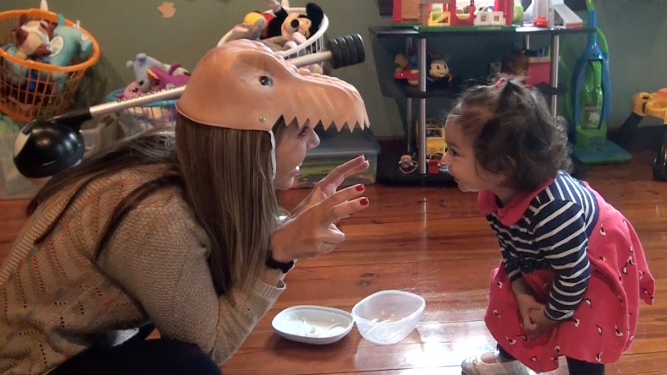
At 19 months, toddlers are still engaging in functional play, using toys in the manner that they are intended to be used such as sweeping with a toy broom and “driving” a toy truck. They are starting to use more and more symbolic play (sometimes called pretend play, imaginative play, or dramatic play) demonstrating higher-level thinking. Symbolic play is when your child understands that an item represents something else, such as a toy train symbolizing a real train. You will see her make “choo-choo” noises as she plays with the train. This symbolic play lays the foundation for problem solving, making associations, and higher-level language and communication skills later on.
You can help him learn this skill by playing with your child and taking his play to the next level. When he picks up a baby doll, pick up another baby doll and feed it a toy bottle, pat the baby doll, then lie it down and cover it with a blanket to show your toddler how to play with it. See if he takes your cues and does the same thing.
Your 19-month-old is becoming more interested in other children playing beside her and maybe copying the play of other children. Try to set up opportunities for playing with children who are slightly older.
References:
Weisberg, D. S, Hirsh-Pasek, K., & Golinkoff, R. M. (2013). Guided play: Where curricular goals meet a playful pedagogy. Mind, Brain, and Education, 7(2), 104–112.
Hirsh-Pasek, K., & Golinkoff, R. M. (2003). Einstein never used flashcards: How our children really learn and why they need to play more and memorize less. Emmaus, PA: Rodale Press.
Fein, G., & Rivkin, M. (Eds.). (1986). The young child at play: Reviews of research (Vol. 4). Washington, DC: National Association for the Education of Young Children.

